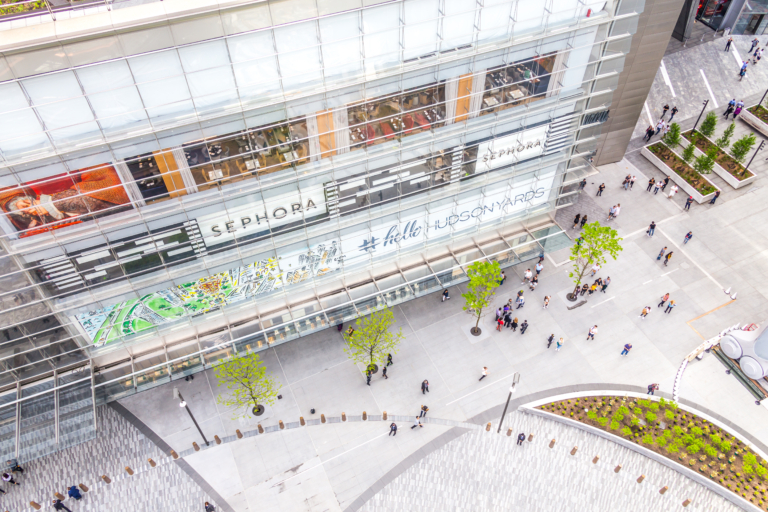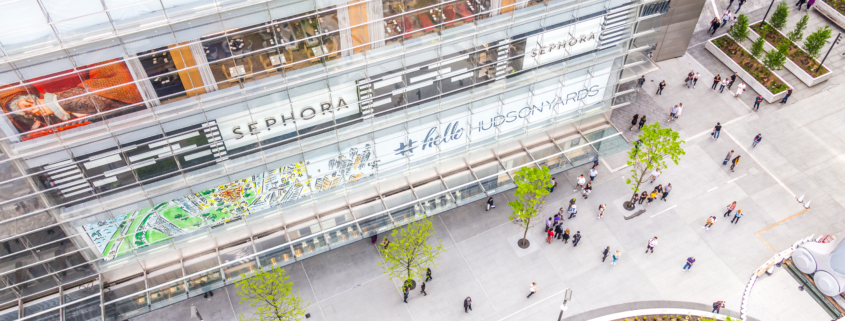
Shopping Center “Shop Talk”
With continued growth projections for the retail industry, shopping centers can be a great investment as long as you understand what you are investing in and the risks associated. ICSC defines a shopping center as a group of retail and other commercial establishments that is planned, developed, owned and managed as a single property, typically with on-site parking provided.
Shopping centers come in various combinations of size, concept, tenant purpose, and anchor mix. Mainstream media, Wall Street and the general public don’t have a set classification system to follow because the industry doesn’t have an agreed upon system to categorize shopping centers. Inherently complex and difficult to understand, ICSC has developed a classification table with typical characteristics they are hoping the industry will adopt. We’re not quite sold on this system.
Types of Shopping Centers
Malls
The most identifiable of the various types of shopping centers, typically enclosed buildings with a central corridor and with one shared roof are malls. Key components that help categorize a shopping center a mall:
- 400,000 – 800,000 sq. ft. of commercial space (although there is no actual limit to the size they can be)
- At least 2 anchor tenants (typically national department stores)
- House food courts or full-service restaurants
- Apparel makes up a sizable portion of the general products sold
The growth of e-commerce has made it difficult for many malls to remain competitive. However, many malls are increasingly relying on fresh approaches to draw customers, such as providing more experience shopping options and including other forms of entertainment, like restaurants and movie theaters.
Neighborhood Centers | Community Centers
Neighborhood Centers typically get thrown into the category of what people refer to as strip malls. A strip mall is a collection of retail stores and other businesses that are designed, built, owned, and operated as a single building with on-site parking. Key components that help categorize a shopping center a Neighborhood or Community Center:
- 30,000 – 400,000 square feet in size
- Have one to two anchor stores
- Provide daily necessities and personal services such as grocery, apparel, drugstores, tailors, dry cleaners, or cell phone stores
Because they often include local “mom-and-pop” businesses with less of an established reputation, community centers —along with neighborhood centers and convenience centers —pose a higher risk for lenders and investors. Having strong anchor tenants can mitigate this risk.
Power Center | Big Box Stores
The defining characteristic of power centers are that they are made primarily of anchor stores. Typically 75% to 90% of available retail space in Power Centers is dedicated to anchor stores. Name brand grocery stores, discount stores, super drugstores, and home improvement stores are examples of typical big box store anchors. Key components that help categorize a shopping center a Power Center or Big Box Store:
- Retail space ranging from 100,000 – 300,000 square feet
- At least three anchor stores
- Pad sites typically include fast food or other eateries in their parking lot
Other Shopping Centers
Shopping centers that can’t be classified in the previously mentioned shopping center types, are factory outlets, mixed-use retail, fashion centers, and freestanding retail stores.
Contributing Factors to Shopping Center Success
Location
One important factor to consider when evaluating a commercial investment property, particularly in the shopping center sector, is location. The location of any kind of shopping center can greatly impact its potential for success. It’s important to look for properties located in high-traffic areas, with easy access to public transportation and close proximity to major highways, and in a market with a strong and growing population.
Tenant Mix
Another important factor to consider is the tenant mix and the diversity of the tenant mix. A shopping center property with a mix of different types of retailers, such as a grocery store, pharmacy, and clothing store, has a better chance of success than a property with only one type of tenant. The state of the economy and buyer expendable income will directly impact some tenant types more than others.
Market Conditions and Outlook
It’s also important to thoroughly research the current market conditions and the future potential of the area. A property in an area with a strong economy and a positive outlook for future growth is more likely to be a successful investment. For example, since the COVID-19 pandemic, open-air Neighborhood Centers and Power Centers have performed consistently better than indoor shopping Malls. The contactless shopping methods were easier to implement in an outdoor layout and thus made these centers more adaptable and therefore more profitable.
Lastly, when investing in retail properties, it’s essential to work with a team of commercial real estate professionals who have the experience and expertise to guide you through the process. Sands Investment Group has an expert retail-focused team that can provide valuable advice and guide you to make good investment decisions. Contact Sands Investment Group to learn more.
By submitting your information and signing up for email updates, you agree to SIG Online Terms of Use

